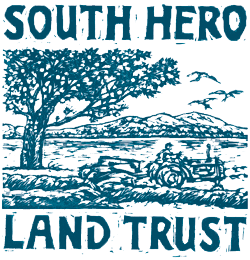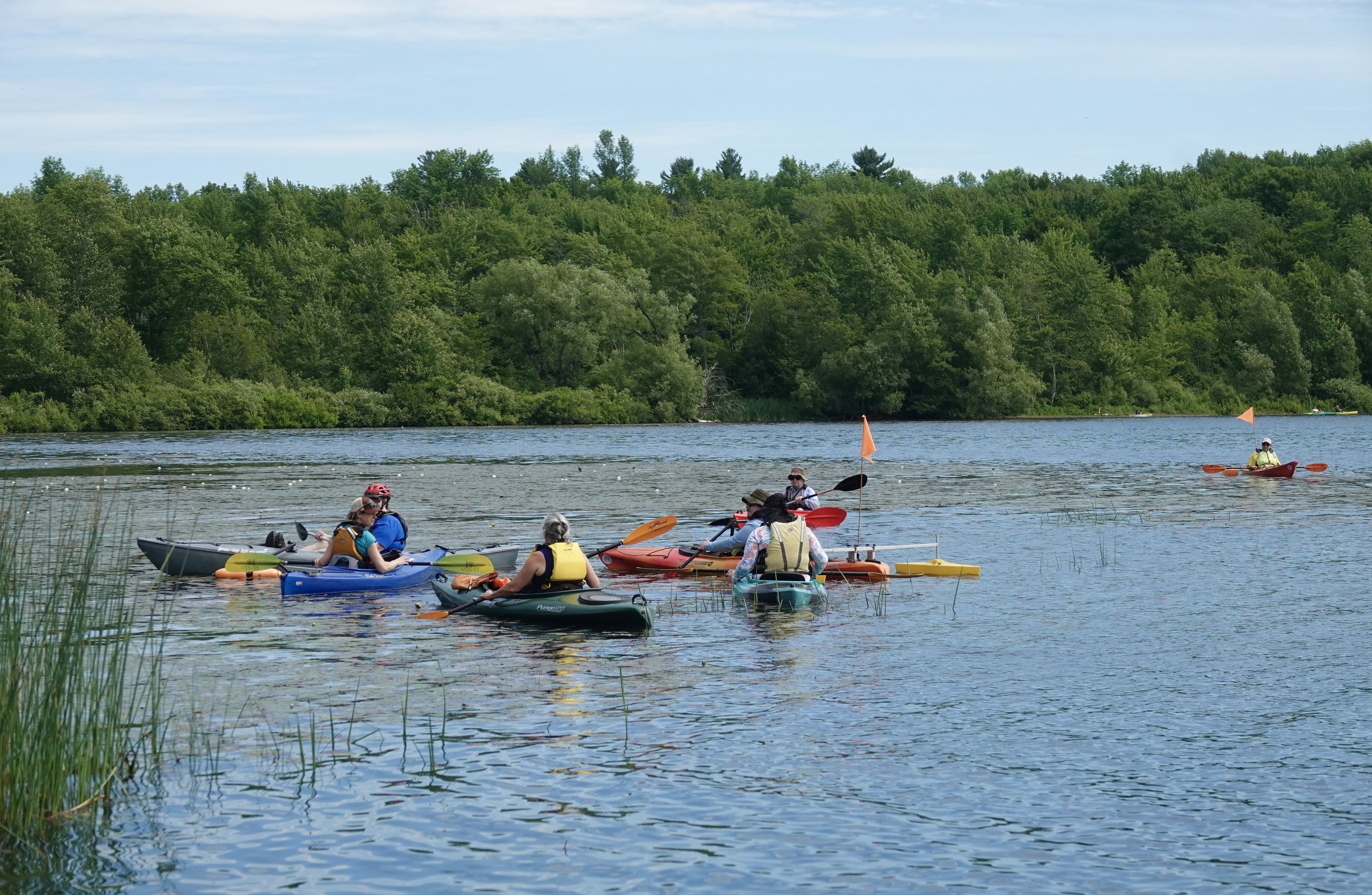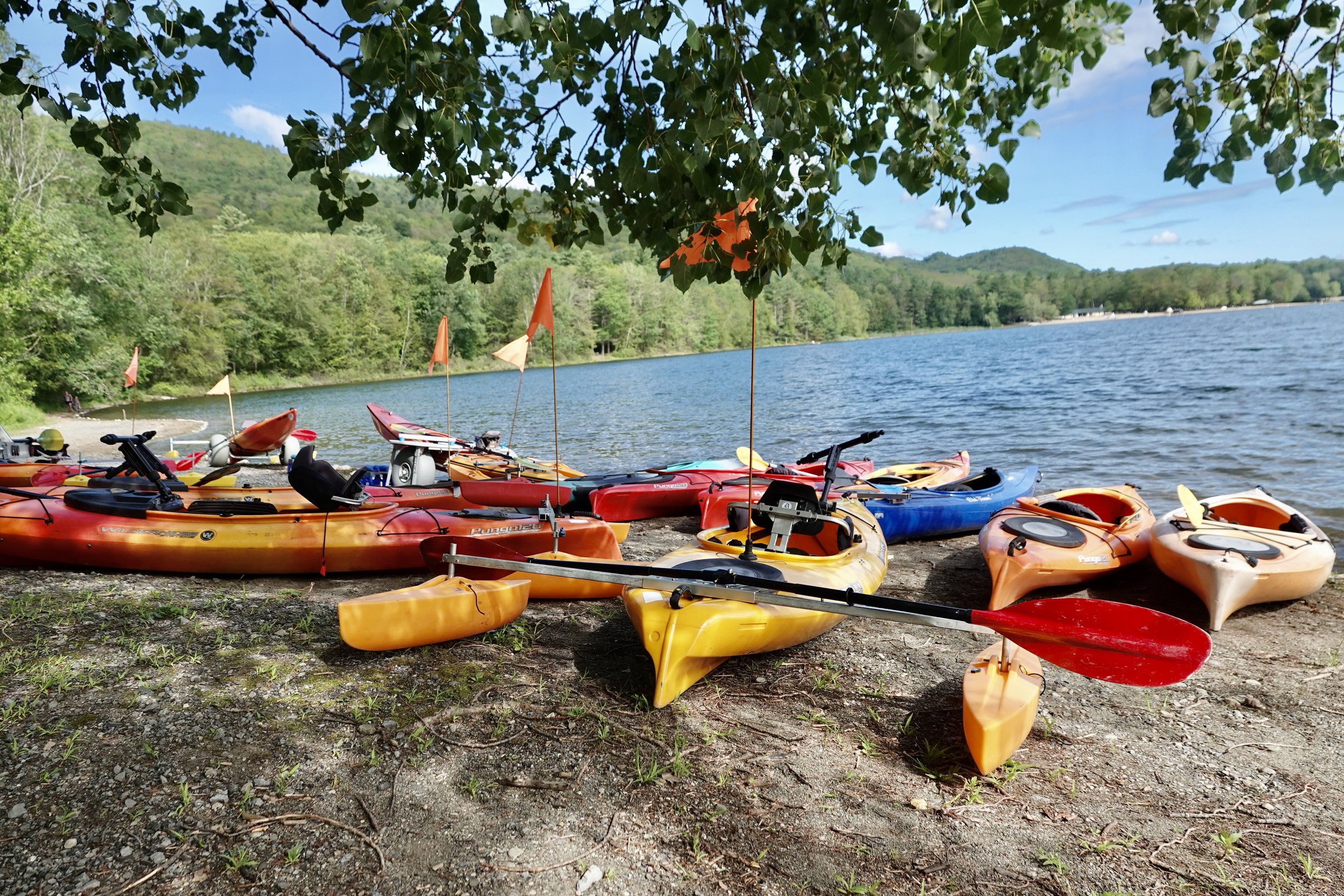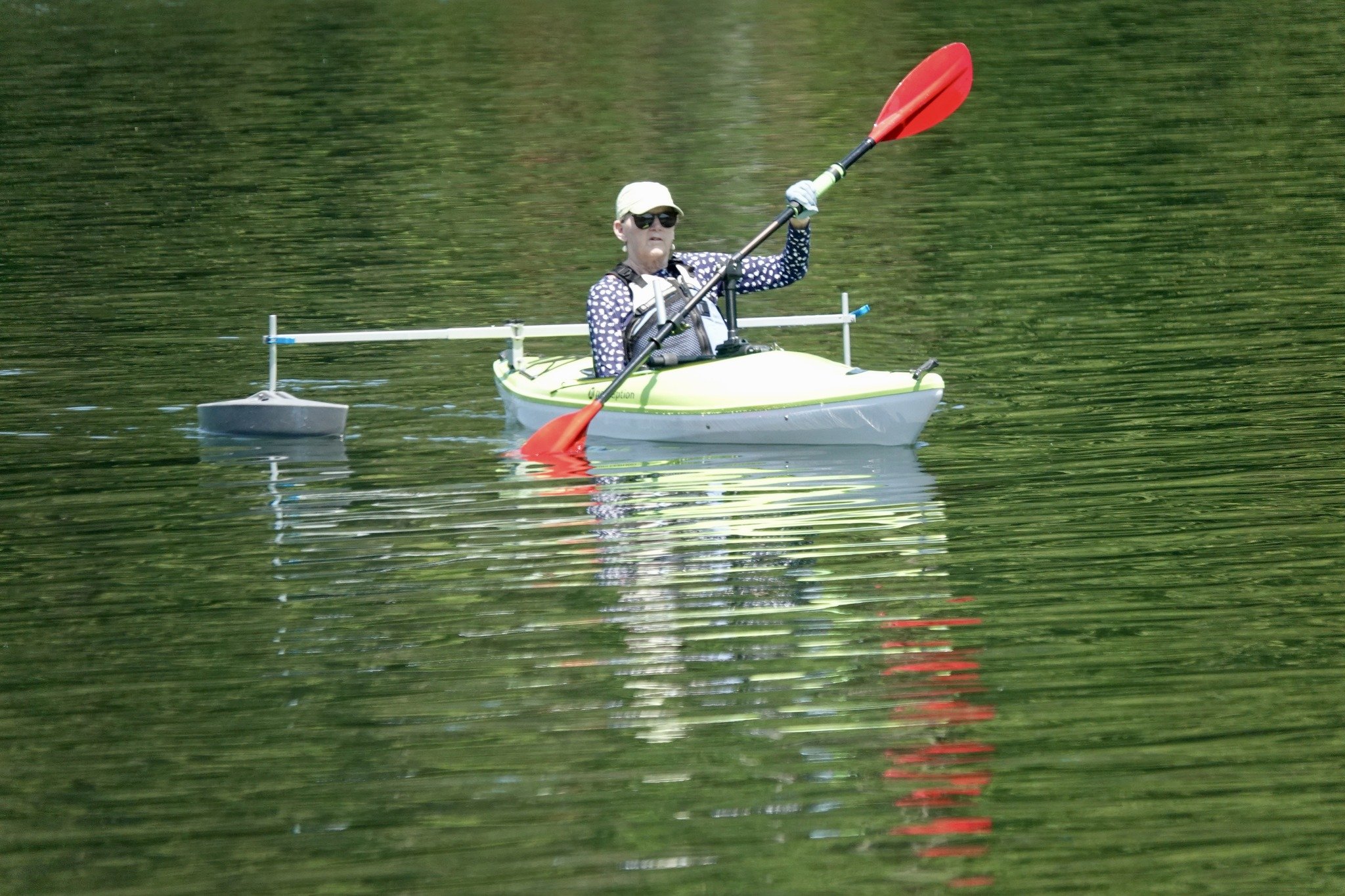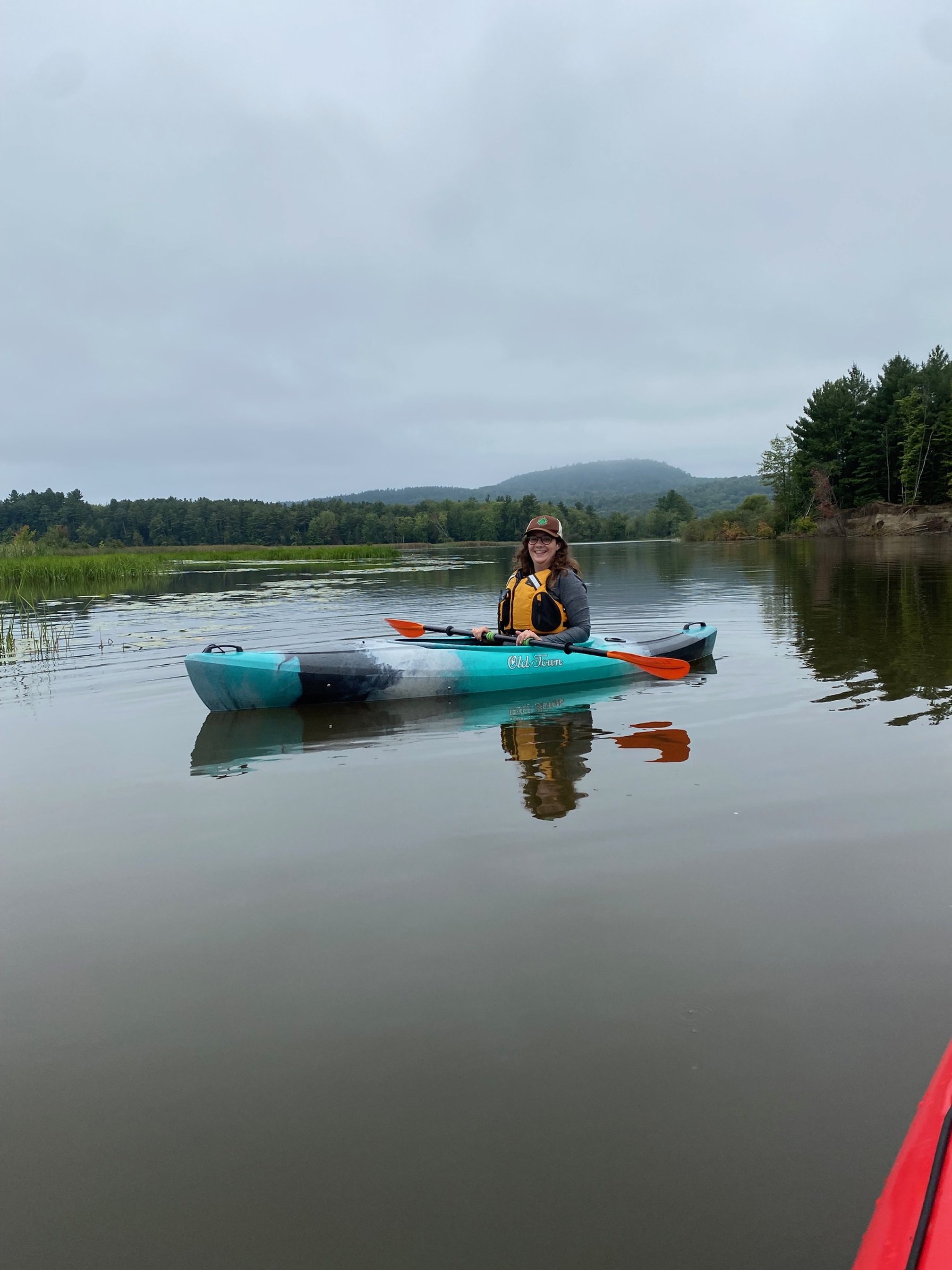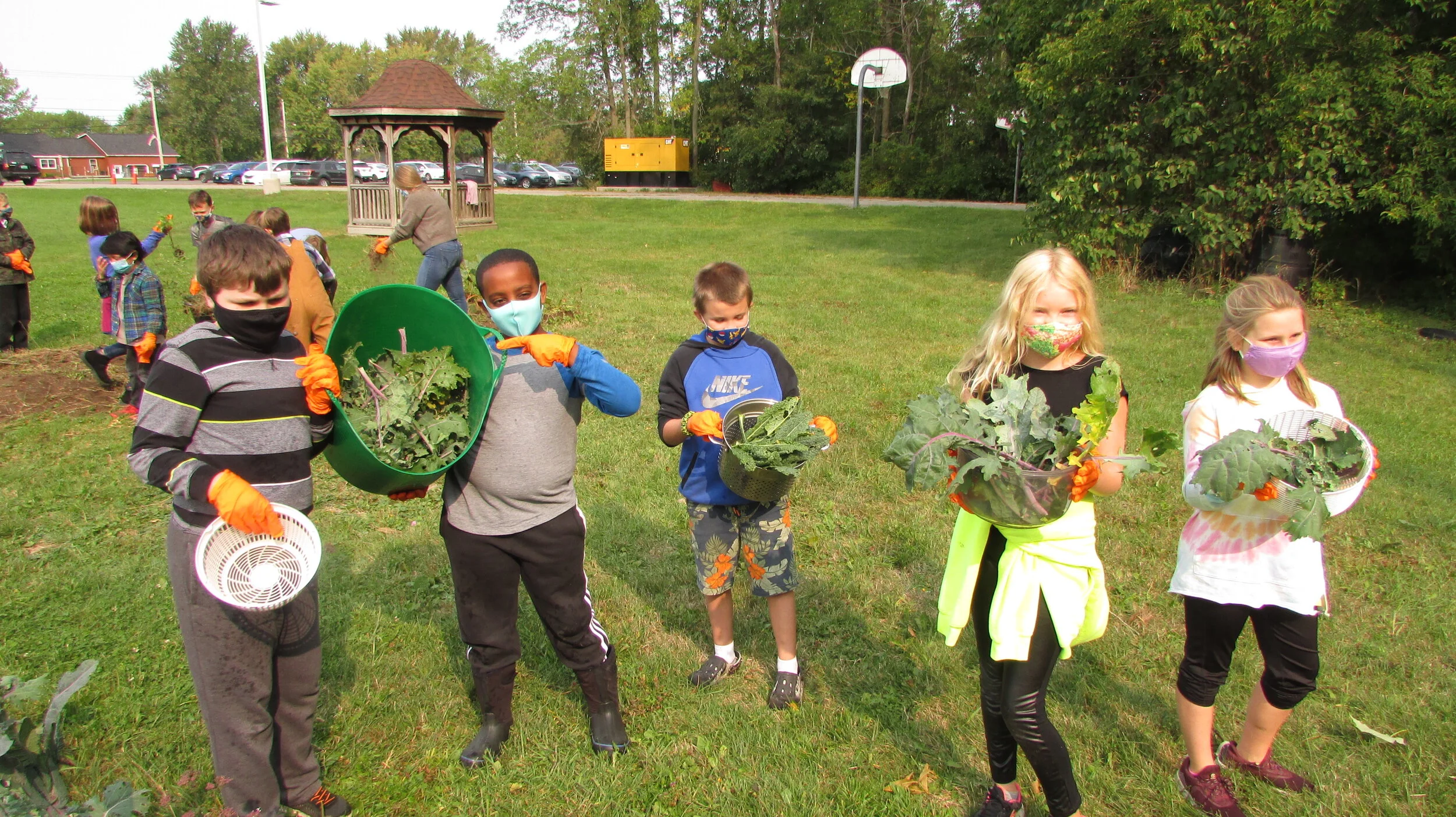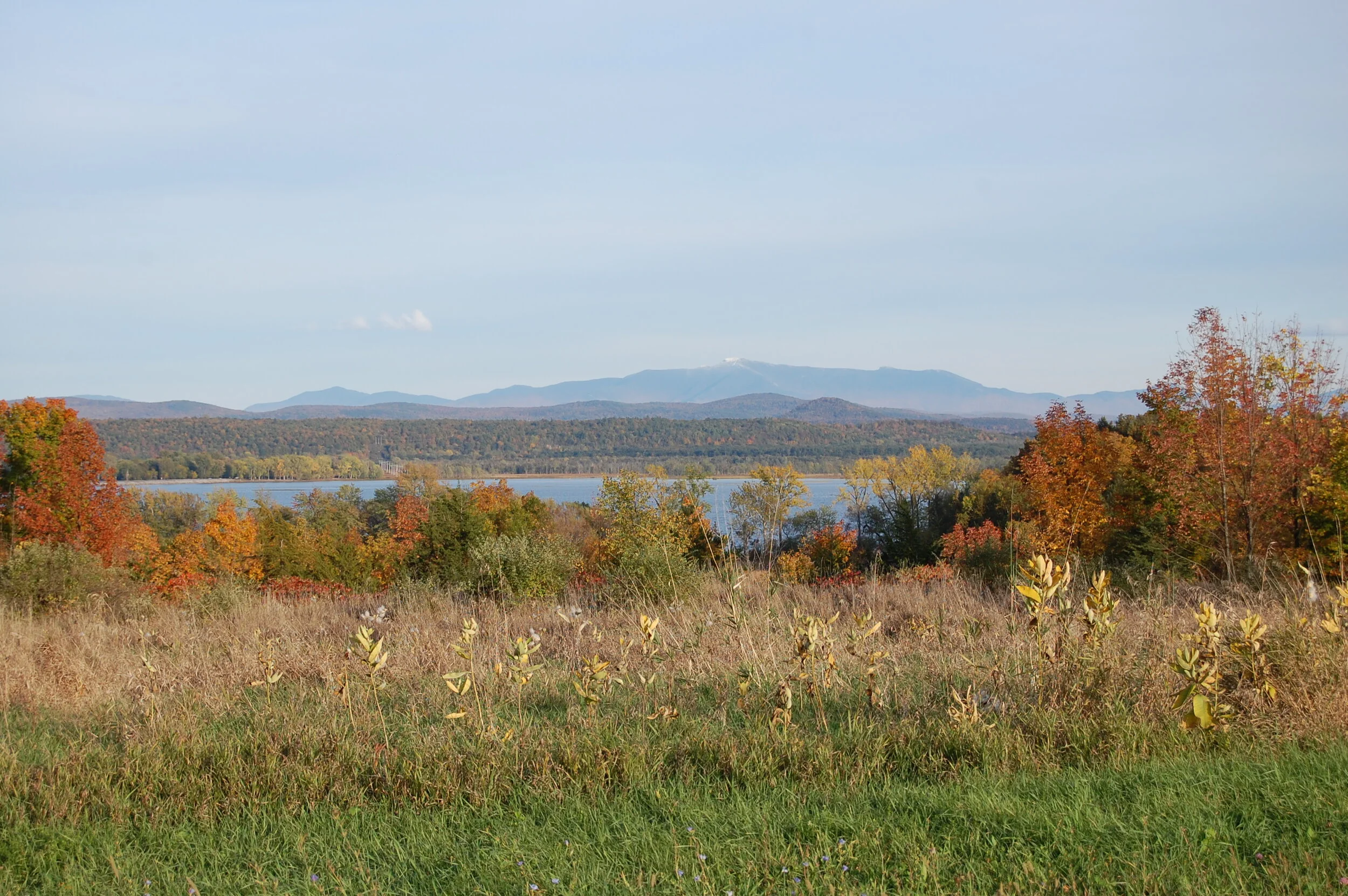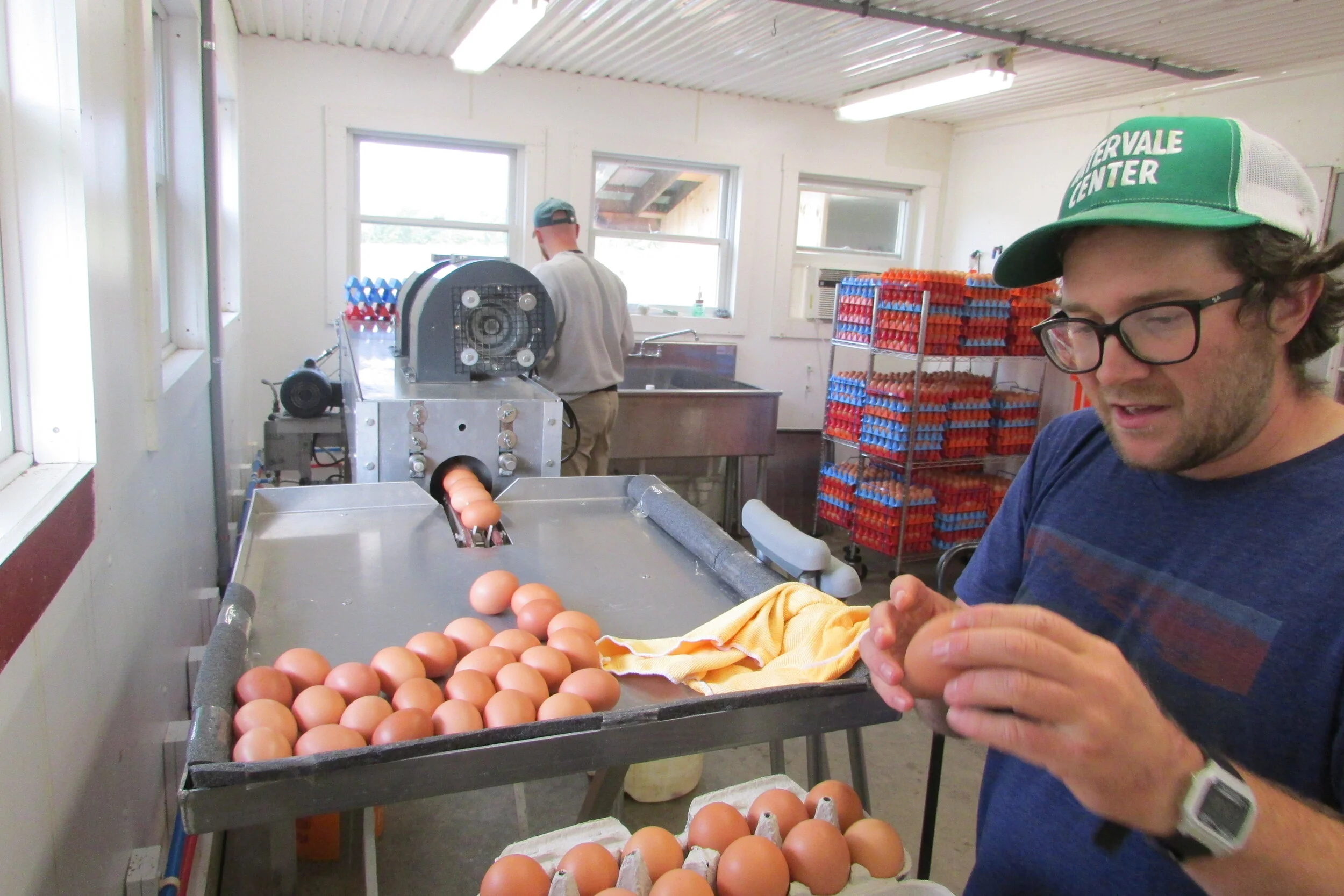Fall 2023 Newsletter
Naomi Heindel, Executive Director of North Branch Nature Center, talking with kayakers at Lake Iroquois in Williston.
South Hero resident Cathy Webster has been helping people with physical disabilities get out on the water for the last 8 years. Inspired by one of her physical therapy clients, who dreamt of finding a way to return to paddling, Cathy created an Adaptive Kayaking Program that is now one of the programs of the Northeast Disabled Athletic Association (NDAA).
“People with physical limitations are only able to get so far out into nature… having the ability to paddle freely along the shore and into coves opens up a new world to them. Having someone paddle along and answer questions and point out wildlife, and patterns in birds’ behaviors is all new. The excitement it brings to so many was wonderful to see!!” - Cathy Webster
Over time, Cathy has built an impressive fleet of kayaks adapted with supportive seats, stabilizing outriggers, and specialty paddles that allow individuals with a diverse array of physical disabilities and neurodiversities to explore Vermont’s waterways independently and under their own power.
South Hero Land Trust and Cathy share the belief that nature is for everyone, which is foundational to the new partnership between SHLT, North Branch Nature Center (NBNC), and NDAA. Starting this year, we piloted a series of 4 naturalist-guided inclusive kayaking events, during which SHLT and NBNC staff joined kayakers to explore and learn about the plants, birds, turtles, and other animals spotted along the water.
“I really enjoyed hearing and learning about the different wildlife that was in the area, especially since it was a new area for me.” - Program Participant
We had so much fun exploring nature with these kayakers, and are grateful to Outdoor Gear Exchange, Vermont Community Foundation, and the Land Trust Alliance for helping to make this experience possible. And many thanks to the Cathy Webster, and the naturalists at North Branch Nature Center for your partnership!
“I really enjoyed connecting with folks on the water while sharing facts and ecological context about the plants, birds and habitats around us. I learned a great deal from the participants too. NBNC is committed to expanding our programs for those with disabilities, and this partnership has been a great step toward that growth.” - Catherine Griset, NBNC
To learn more about the Adaptive Kayaking program, go to disabledathletics.org/programs
